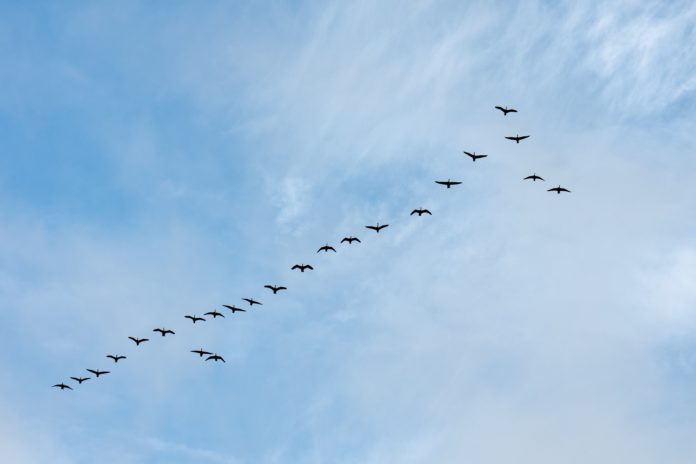Climate change is causing major problems for species across the globe, and while some have been able to adapt, others are in trouble. With the help of a new technology from the University of Manitoba, however, one species of migratory birds may have found a way to adapt and stave off extinction before it’s too late.
The study was led by PhD student Saeedeh Bani Assadi and assistant professor Kevin Fraser, both in the Department of Biological Sciences at the University of Manitoba. Their findings were published in Proceedings of the Royal Society B.
For migratory birds in particular, changing seasonal weather patterns can wreak havoc. If birds arrive back north too late, they may miss out on crucial food sources in the form of early-spring insects, or prime nesting spots that have been taken by other wildlife. Yet if they arrive too early, they’ll find themselves facing freezing temperatures that could be fatal for their delicate hatchlings.
Because birds migrate such incredible distances — for some, the journey may span thousands of kilometres — they don’t know what the conditions will be like at their destinations. Adapting to new weather patterns could take decades, and with so many birds on the brink of extinction, that could be too late.
To help out, Bani Assadi and Fraser investigated whether they could teach a young bird some new tricks. Birds are thought to take migratory cues from natural changes in lighting, so the researchers guessed that artificial lighting cues could be used to coax birds into migrating.
The researchers installed programmable light sources into the nesting boxes of Purple Martins, a species of swallow found in Canada and the USA that migrates to parts of South America during the Northern hemisphere’s winter. Throughout the young birds’ development, the researchers simulated day lengths with these artificial light sources in order to prompt the birds to migrate when the timing was right.
The team found that by simulating different day lengths, they were able to manipulate the timing of the birds’ migrations. Birds that had been exposed to longer simulated day lengths departed for their fall migrations later than those that had only received cues from natural sunlight, indicating that with a little help, they may be able to adapt to climate change after all.
“We found that migration timing can be flexible to the day length birds experience while still in the nest,” Bani Assadi said in a press release.
“This helps us to see the potential for an assisted evolution approach to solving birds’ timing problems, where we may be able to intervene to help birds keep up with the pace of climate change.”
The next step will be to see how these artificial cues affect the birds throughout their lives and whether patterns learned during development persist for future seasons. This will help the researchers determine how much intervention is required.
“[W]e need to determine whether timing developed in the nest ‘sticks’ as birds age or if it continues to change across a bird’s lifetime,” Fraser said.
By doing so, the team may be able to help these birds adapt and stave off extinction before it’s too late.








































